This article needs additional citations for verification .(March 2014) |

Saint Tola is the name of a seventh-century Irish Roman Catholic and Orthodox Christian saint, also referred to as "a good soldier of Christ". [1]
This article needs additional citations for verification .(March 2014) |

Saint Tola is the name of a seventh-century Irish Roman Catholic and Orthodox Christian saint, also referred to as "a good soldier of Christ". [1]
Tola, the reputed son of Donchad, [2] is also referred to as Thola or Tolanus. He was born, after the middle of the seventh century. [3]
He lived for many years the life of a hermit at Disert Tola, and founded a monastery there in the latter 7th or early 8th century. [4]
He was the bishop of Clonard in Meath, Ireland and a crozier ascribed to him now resides in the National Museum of Ireland, in Dublin. About the year 700, he established a monastic community in northwestern County Clare, between the River Fergus and the Burren. [1] He sent missionaries to Europe and also helped the expansion of various scholarly studies. Later, Bishop Tola was called to preside over Clonard, County Meath until his death sometime between 734 and 737. [5]
Portions of his original church, a very early church, or at least portions of its foundations, were incorporated into the 11th-century Romanesque Church that lies in ruins near Corofin. The high cross at Dysert O'Dea Monastery is referred to as Tola's Cross, Crusha Baunala or "the cross of blessing". It is from the 11th or 12th century, however, and there is no direct connection between the saint and this particular, late, high cross although one of the figures on the cross appears to be that of a bishop, perhaps St. Tola.
His feast day is celebrated on 30 March. [5]
St. Tola was the patron saint of "toothaches", The cross had a portion that could be taken out and was placed near the tooth in order to assist in healing.
In the year 1034, Coirten Ua Maebuain, Lord of Dealbhna, was killed by some of his clansmen, on the threshold of Disert Tola church. In punishment for this sacrilegious and unnatural murder, the perpetrator of the crime was killed the very same hour he perpetrated the treacherous act. [3]
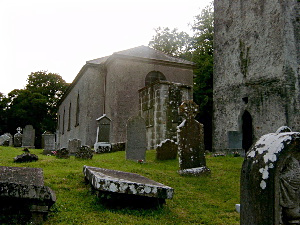
Ardbraccan is an ancient place of worship in County Meath, Ireland. It is the location of the former residence of the Roman Catholic, then, after the Reformation, the Church of Ireland Bishop of Meath. it was also a place of prominence in pre-Christian Pagan history. It is approximately 52 km from Dublin via the M3 Motorway, and 4 km from Navan.

Carnaross or Carnaros is a village in County Meath, Ireland, approximately 4 km northwest of Kells on the R147 road between Kells and Virginia, County Cavan.
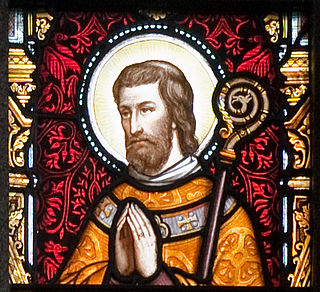
Saint Máedóc of Ferns, also known as Saint Aidan, Saint Madoc or Saint Mogue, was an Irish saint who was the first Bishop of Ferns in County Wexford and the founder of thirty churches. His birth name was Áed, the name of the Irish god of the underworld, meaning "fire". The name Aidan is a diminutive form of Aed or Aodh, and was also a form of the Latin name Dominus. Máedóc and Mogue are other pet forms of Aed or Aodh, formed from the Irish affectionate prefix mo- and the diminutive suffix -óg, meaning "young", making for something like "my dear little Aodh".

March 29 - Eastern Orthodox liturgical calendar - March 31
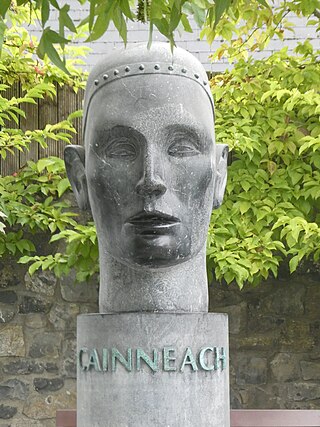
Cainnech of Aghaboe (515/16–600), also known as Saint Canice in Ireland, Saint Kenneth in Scotland, Saint Kenny and in Latin Sanctus Canicus, was an Irish abbot, monastic founder, priest and missionary during the early medieval period. Cainnech is one of the Twelve Apostles of Ireland and preached Christianity across Ireland and to the Picts in Scotland. He wrote a commentary on the Gospels, which for centuries was known as the Glas-Choinnigh or Kenneth's Lock or the Chain of Cainnech.
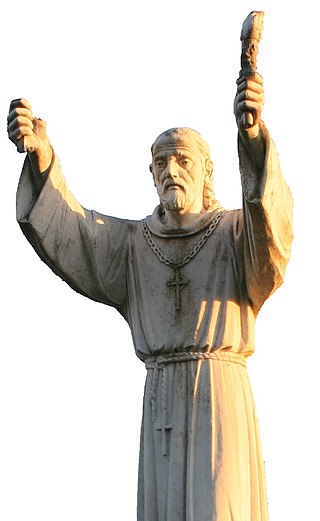
Finnian of Clonard – also Finian, Fionán or Fionnán in Irish; or Finianus and Finanus in its Latinised form (470–549) – was one of the early Irish monastic saints, who founded Clonard Abbey in modern-day County Meath. The Twelve Apostles of Ireland studied under him. Finnian of Clonard is considered one of the fathers of Irish monasticism.
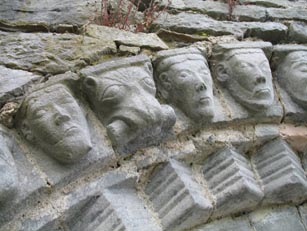
Dysert O'Dea Church near Corofin in County Clare, Ireland stands on the site of an early Christian monastery which was reportedly founded by St. Tola in the 8th century. Most of the present structures are from the 12th century.

The Twelve Apostles of Ireland were twelve early Irish monastic saints of the sixth century who studied under St Finnian at his famous monastic school Clonard Abbey at Cluain-Eraird, now Clonard in County Meath.
Clonard may refer to:

Clonard is a small village in County Meath, Ireland. It lies on the R148 regional road between the towns of Kinnegad and Enfield. This road was the main road between Dublin and Galway until the construction of the M4 motorway. It is still used by traffic avoiding the toll on the M4.

Clonard Abbey was an early medieval monastery situated on the River Boyne in Clonard, County Meath, Ireland.

Saint Féchín or Féichín, also known as Mo-Ecca, was a 7th-century Irish saint, chiefly remembered as the founder of the monastery at Fore (Fobar), County Westmeath.
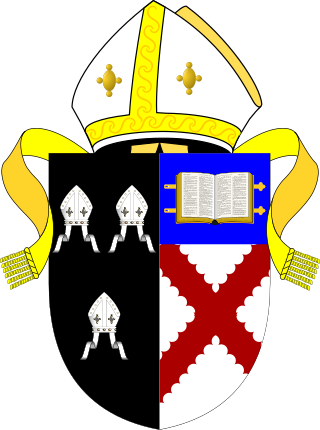
The United Dioceses of Meath and Kildare is a diocese in the Church of Ireland located in the Republic of Ireland. The diocese is in the ecclesiastical province of Dublin. Alone of English and Irish bishops who are not also archbishops, the Bishop of Meath and Kildare is styled "The Most Reverend".
Events from the 6th century in Ireland.
Elizabeth Hickey (1917–1999) was a Meath historian and author who lived at Skryne Castle near Tara. The doyenne and best known of Meath historians, she wrote on a variety of topics. According to the Irish Times, she typified the immense contribution of local historians to Irish history, "through her long and rewarding passion for the rich history of Co Meath, producing valuable books, articles and insights."

Ninnidh was a 6th-century Irish Christian saint. St. Ninnidh is regarded as one of the Twelve Apostles of Ireland. He is associated with the shores of Lough Erne and particularly the island of Inishmacsaint and the parish of Knockninny, County Fermanagh, Northern Ireland. His feast day is 18 January.

Inis Cealtra, also known in English as Inishcaltra or Holy Island, is an island off the western shore of Lough Derg in Ireland. Now uninhabited, it was once a monastic settlement. It has an Irish round tower, and the ruins of several small churches, as well as four high crosses and a holy well. Despite the lack of population, the cemetery on this island is still in use. Coffins and mourners are transported the short distance from County Clare in small boats. Boat trips can be taken from the harbour at Mountshannon. It is conserved by the East Clare Heritage Centre.

March 9 - Eastern Orthodox liturgical calendar - March 11
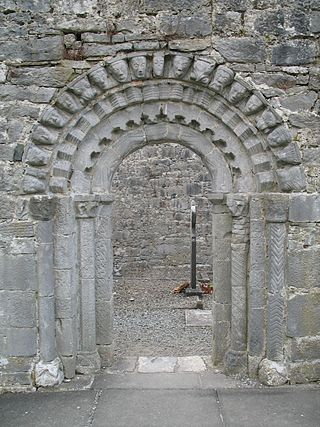
Dysart and Ruan is a Catholic parish in County Clare, Ireland. It covers the civil parishes of Ruan and Dysert, and includes the village of Ruan, which holds the parish office. The parish contains the ruins of the 12th century St. Tola's Church, part of Dysert O'Dea Monastery.
Saint Bécán was an Irish monk who founded a monastery at Kilbeggan and is considered by some to be one of the Twelve Apostles of Ireland. His feast day is 5 April.